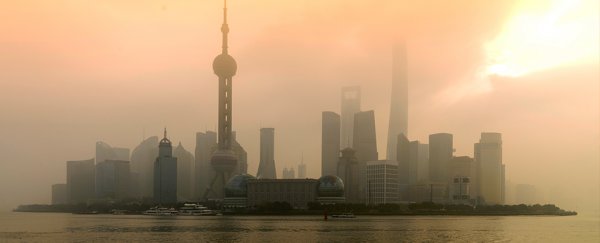When it comes to figuring out the environmental causes of developmental problems in kids, the landscape is tricky. But a new study has found that exposure to certain types of air pollution early in childhood can significantly raise the risk of developing symptoms associated with autism spectrum disorder (ASD).
The latest research, conducted in Shanghai, has gone a step further than previous research that had shown similar links involving unborn children, showing there was a continued risk to neurological development for the first few years after birth in environments polluted by particles nobody is keeping a close eye on.
Nearly 1,500 children were included in the research, which was led by Monash University's School of Public Health and Preventive Medicine.
"The serious health effects of air pollution are well-documented, suggesting there is no safe level of exposure," says the study's lead author Yuming Guo.
"Even exposure to very small amounts of fine particulate matter have been linked to pre-term births, delayed learning, and a range of serious health conditions, including heart disease."
Inhalable particles up to 10 micrometres in size are a major source of air pollution. They include fine bits of carbon, sulphur oxides, and organic compounds produced by traffic, industrial processes, and fossil fuel burning.
Their threat to our general health is no great secret, and governments usually do their best to keep particle concentrations to a minimum. While every bit helps, even low levels of micrometre-sized particles are a concern.
There are a multitude of health conditions linked with this major category of air pollution, mostly involving cardiovascular and pulmonary disease.
Less clear are raised risks of impaired neurological development. Most of the research showing links between ASD and air quality have focussed on prenatal exposure, with some taking into account exposure during the first year.
The condition's characteristics – including difficulties in social interactions and communication – are hard to identify before the age of two to three, but appear to be caused by fundamental differences in brain structure and functional connectivity.
ASD is an incredibly complex mix of behaviours, reflected in its history of associating various autism-like disorders under a single category.
Genes clearly play a strong role in its development, but environmental conditions also seem to play part, leaving open the question of how influential those first few years of life are on the child's growing brain.
"The developing brains of young children are more vulnerable to toxic exposures in the environment and several studies have suggested this could impact brain function and the immune system," says Guo.
The timing of genetic influences and environmental effects could tell us more about how the condition unfolds, which means studies that look beyond birth.
So the research team compared 124 cases of ASD with 1,240 children who had no diagnosis. The children were selected from primary schools and kindergartens in Shanghai in 2014, putting them between 3 and 12 years of age.
Data from daily readings of 1, 2.5, and 10 micrometre sized particles were matched up with where these kids lived during their first three years of life, giving the researchers a sense of which children had been exposed to high concentrations of aerosols.
The team saw a clear pattern emerge - those first three years are crucial periods, with up to 86 percent greater chance of developing ASD when exposed to particles of around one micrometre in size.
What's more, this risk was greatest during the second and third years of age. The reasons aren't clear, though the researchers suspect disruptions to the immune system could be at least partially to blame.
The nature of the particles could also play an important role. Another recent study has found exposure to toxic compounds called dioxins also increases the chances of developing the condition, while other research suggests the famous pesticide DDT could also be a problem.
Particulates around one micrometre in size don't tend to be categorised separately from 2.5 micrometre particulates in air quality monitoring and control, and yet seem to be responsible for some of the more serious effects on health. Studies like this show we might want to start paying attention and develop better policies.
"Given that PM1 accounts about 80 percent of PM2.5 pollution in China alone, further studies on its health effects and toxicology are needed to inform policy makers to develop standards for the control of PM1 air pollution in the future," says Guo.
This research was published in Environment International.
